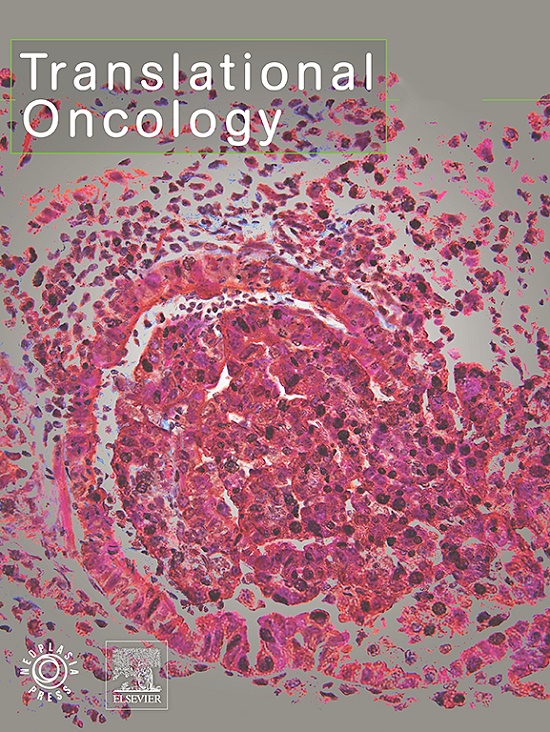黑色素瘤脑转移中肿瘤异质性的深入患者特异性分析:来自空间转录组学和多区域批量测序的见解
IF 5
2区 医学
Q2 Medicine
引用次数: 0
摘要
由复杂的肿瘤微环境驱动,黑色素瘤脑转移(MBM)表现出广泛的肿瘤间和肿瘤内异质性(ITH)。本研究的目的是使用多组学方法对单个MBM患者肿瘤进行详细分析,将空间转录组学与多区域大外显子组、蛋白质组和转录组分析结合起来,用于一小组4例患者样本。我们发现了免疫细胞浸润的显著患者特异性变化,特别是在B/浆细胞、髓细胞和癌症相关成纤维细胞(CAFs)中。值得注意的是,接受免疫治疗的患者显示出与上皮-间质转化(EMT)、干扰素-γ (IFN-γ)信号传导、氧化磷酸化、t细胞信号传导、炎症和DNA损伤相关的丰富通路,这与空间分析中观察到的不同细胞组成一致。我们还发现了相当多的ITH,特别是在蛋白质水平上,揭示了关键肿瘤和免疫相关标志物的差异表达模式。mRNA和蛋白质数据之间的相关性突出了跨多组学层的关键通路的一致富集。这些发现强调了个体MBM患者的分子和细胞景观,强调了在制定有效治疗策略时解决肿瘤异质性的重要性。本文章由计算机程序翻译,如有差异,请以英文原文为准。

In-depth patient-specific analysis of tumor heterogeneity in melanoma brain metastasis: Insights from spatial transcriptomics and multi-region bulk sequencing
Melanoma brain metastases (MBM) exhibit extensive intertumor and intratumor heterogeneity (ITH), driven by a complex tumor microenvironment. The aim of this study was to perform a detailed analysis of individual MBM patient tumors using a multiomics approach, integrating spatial transcriptomics with multi-region bulk exome, proteome, and transcriptome profiling for a small group of four patient samples. We identified significant patient-specific variations in immune cell infiltration, particularly in B/plasma cells, myeloid cells, and cancer-associated fibroblasts (CAFs). Notably, immunotherapy-treated patients showed enriched pathways related to epithelial-mesenchymal transition (EMT), interferon-gamma (IFN-γ) signaling, oxidative phosphorylation, T-cell signaling, inflammation and DNA damage, which aligned with distinct cellular compositions observed in the spatial analysis. We also uncovered considerable ITH, especially at the protein level, revealing differential expression patterns of key tumor and immune-related markers. The correlation between mRNA and protein data highlighted consistent enrichment of critical pathways across multiomics layers. These findings highlight the molecular and cellular landscape of individual patient MBM, underscoring the importance of addressing tumor heterogeneity in the development of effective therapeutic strategies.
求助全文
通过发布文献求助,成功后即可免费获取论文全文。
去求助
来源期刊

Translational Oncology
ONCOLOGY-
CiteScore
8.40
自引率
2.00%
发文量
314
审稿时长
54 days
期刊介绍:
Translational Oncology publishes the results of novel research investigations which bridge the laboratory and clinical settings including risk assessment, cellular and molecular characterization, prevention, detection, diagnosis and treatment of human cancers with the overall goal of improving the clinical care of oncology patients. Translational Oncology will publish laboratory studies of novel therapeutic interventions as well as clinical trials which evaluate new treatment paradigms for cancer. Peer reviewed manuscript types include Original Reports, Reviews and Editorials.
 求助内容:
求助内容: 应助结果提醒方式:
应助结果提醒方式:


